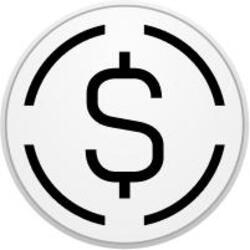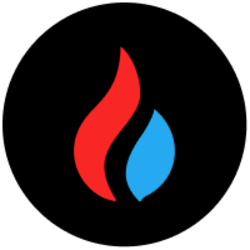If today we talk to any financial advisor, it is likely to have a firm opinion about the so -called “structured notes.” These complex products are sold as the most profitable investments in the world of patrimonial management. Its specialty is flexibility: some are growth oriented and others to the generation of income. Profitations usually have a limit and, in all cases, the objective is to limit the risk of losses. They are manufactured by large banks such as JPMorgan through derivatives and, often, are sold as “linked to the stock market” with protection that guarantees a repair dream. They offer various expiration terms, which usually go from six months to five years, offer capital protection and, sometimes, offer an annual profitability of 10 % or higher.
Until a few years ago, structured notes were exclusive domain of coverage funds and other sophisticated investors or ultra -clients. But thanks to an ingenious engineering, they are now offered by numerous runners and are sold in small amounts of $ 1000. The current volatility and uncertainty of the market have driven their popularity. Last year, the US market of structured notes sold by runners reached a record of almost 150 billion dollars, 46 % more than the previous year, according to London Intelligence. JPMorgan was the main issuer in 2024, closely followed by entities such as Citi, Goldman Sachs, Morgan Stanley and Barclays.
“I love structured notes,” says Ahn Tran, independent advisor to Sagemint Wealth, with 350 million dollars in assets, in Irvine, California. Structured notes represent approximately 30% of the allocation in most Tran customer wallets. “I had never received so many calls from advisors wondering if we could talk to them about how we manage our portfolios,” says Tran.
“Customers are using structured notes not because they are ‘fashionable’, but because they allow them to take greater control of the result,” insists Michaelangelo Dooley, portfolio manager of structured notes strategies in Newedge, an investment advice firm of $ 30 billion. Dooley refers to the fact that these values can be tailored to meet the demand created by specific market environments. A few years ago, when the rates were low, for example, the stock market notes that offered income of 10-12% were popular. “Each (note) is completely different with the risk it assumes. Even within the same category, such as contingent performance notes, two products can have similar structures but very different results based on underlying assets.” One could be linked to the S&P 500, another to the actions of Tesla or Nvidia, says Doolyy, adds: “They are not comparable operations.”
Consider senior bonds in the medium term, K series, linked to the market, recently issued by the Bank of Montreal, expiring in April 2028. These bonds, one of the first products to leave a record of 78,000 million dollars, do not accrue interest and are designed to replicate the performance of the NASDAQ 100 index, with a strong technological presence, which has fallen by 11 % in what is going on for the year. The maximum gain to which bond holders are entitled is 22.8 %. Therefore, if in three years, the expiration date of the bonds, the Nasdaq 100 has risen 35 % since its level of April 25, 2025, investors will only be entitled to $ 1228 for each bonus with a nominal value of $ 1000. However, if technological actions continue to fall and NASDAQ 100 falls 35 %, BMO structured bond holders will recover their original 1000 dollars.
Another type of structured promissory note is known as “damping” promissory note. These, which usually replicate an index such as S&P 500, offer a mattress of, for example, 20% or 30% against losses. If the asset falls 15%, the capital of the investor is preserved. If 35%falls, the first 30%is protected and the investor only assumes the final loss of 5%.
Read more: New Telecom Law must go through a rigorous technical analysis and a plural dialogue: IP
In the middle of the chaos of the market, the downward protection values become relevant for these reasons
Contingent rental notes offer periodic income (for example, 9 % per year) provided that the underlying asset or index does not fall below a pre -established limit. They are usually self-revocable, which means that they are amortized in advance if the reference asset reaches a high objective price. If the markets remain stable or upwards, this characteristic can allow rapid obtaining profits and profitability of capital. However, when the markets remain volatile (as in 2025), the notes can be extended until the expiration, generating income, but testing the patience of investors.
The contingent barrier notes, meanwhile, act as a trap. If the index is maintained above an established barrier – comply between 60 % and 75 % of its initial value – the investor recovers its capital, possibly with a coupon. But if the barrier is exceeded, the protection disappears and the profitability of the note fluctuates along with the underlying asset, which means that the client assumes a loss of 1: 1.
According to Andrew Kuefler, Senior Vice President of Icapital Product Strategy, current volatility has caused these self -statrable contingent income notes to be especially attractive. “When uncertainty increases, these products offer yields between 7 % and 10 % with a downward protection from 30 % to 45 %,” he says. “The advisors use them to take advantage of volatility and generate income without assuming all the risk of variable income.” After market events such as the Trump tariffs announcement, Kuefler observed that price requests increased by 140 % intersemanally, clear evidence of the growing interest of the advisors.
These new values carry costs. The Montreal Bank charges the advisory signatures a 2.5% commission for the creation of the promissory notes. Subsequently, financial advisors also receive their part of the clients. Unlike ETF of mutual funds, these promissory notes also have a limited liquidity and, even in the best case, an investor would probably obtain the same benefit by investing in a background of high -performance corporate bonds, which is inherently less risky and less complex. The Vanguard High Performance Bonds Fund, with an expense rate of 0.22%, currently generates a 7% annual profitability, approximately the same that would be obtained in the best case with the new structured promissory notes linked to the NASDAQ100 of BMO.
Aqr Research, from Greenwich, Connecticut, hardly criticizes structured notes such as BMO, as well as the funds and ETF of similar structure that are sold as “defined result” or “mattress” funds. In March, AQR published a study that indicated that it would be smarter and more economical for investors to reduce its exposure to 100% in shares, say 70% with 30% in Treasury letters, to invest in one of these options based on options. “These ‘mattress funds’ are a marketing success, a success for the managers who sell them and a failure for investors attracted by the promise of exceptional profitability of the variable income without risk, and then overvalued by pleasure,” writes Daniel Villalon, global co -director of portfolio solutions in AQR.
Like their cousins sold by runners, the “reserve ETF” have recently gained popularity. According to Morningstar, the assets have shot up to 58,000 million dollars since its creation in 2018. One of the most popular is the ETF Defined Wealth Shield, by Innovator Funds, of Wheaton, Illinois. This fund of 1.4 billion dollars (assets), whose Bal symbol means “alternative to bonds”, and like other ETFs of reserve, is designed to allow some participation in market profits, but limit losses. Balt allows investors to participate in the profits of the S&P 500, with a limit of 2.47 % quarterly, but protects them from losses of up to 20 % down during the same quarter. During the impressive 23 % increase in S&P 500 in 2024, Balt holders would have earned just under 10 %. So far this year, with a 9 % drop of the S&P, Balt has only dropped 1 %.
Critics of structured investment instruments argue that their complexity masks inefficiencies and costs. They also warn that their apparent security fades during unpredictable economic events, such as a global recession. Structured promissory notes are obligations without guarantee and, therefore, their solidity depends on the strength of the financial institutions that emit them. During the financial crisis, investors lost almost all their capital in the more than 18 billion dollars in structured promissory notes issued by Lehman Brothers.
“Banks and advisors earn a lot of money with them,” says a Morgan Stanley advisor who asked to remain in anonymity. “But in unfavorable scenarios such as 2008, they were the worst that could be had.
This article was originally published by Forbes Us.
You may be interested: Elon Musk is running out of ideas to save Tesla?












































